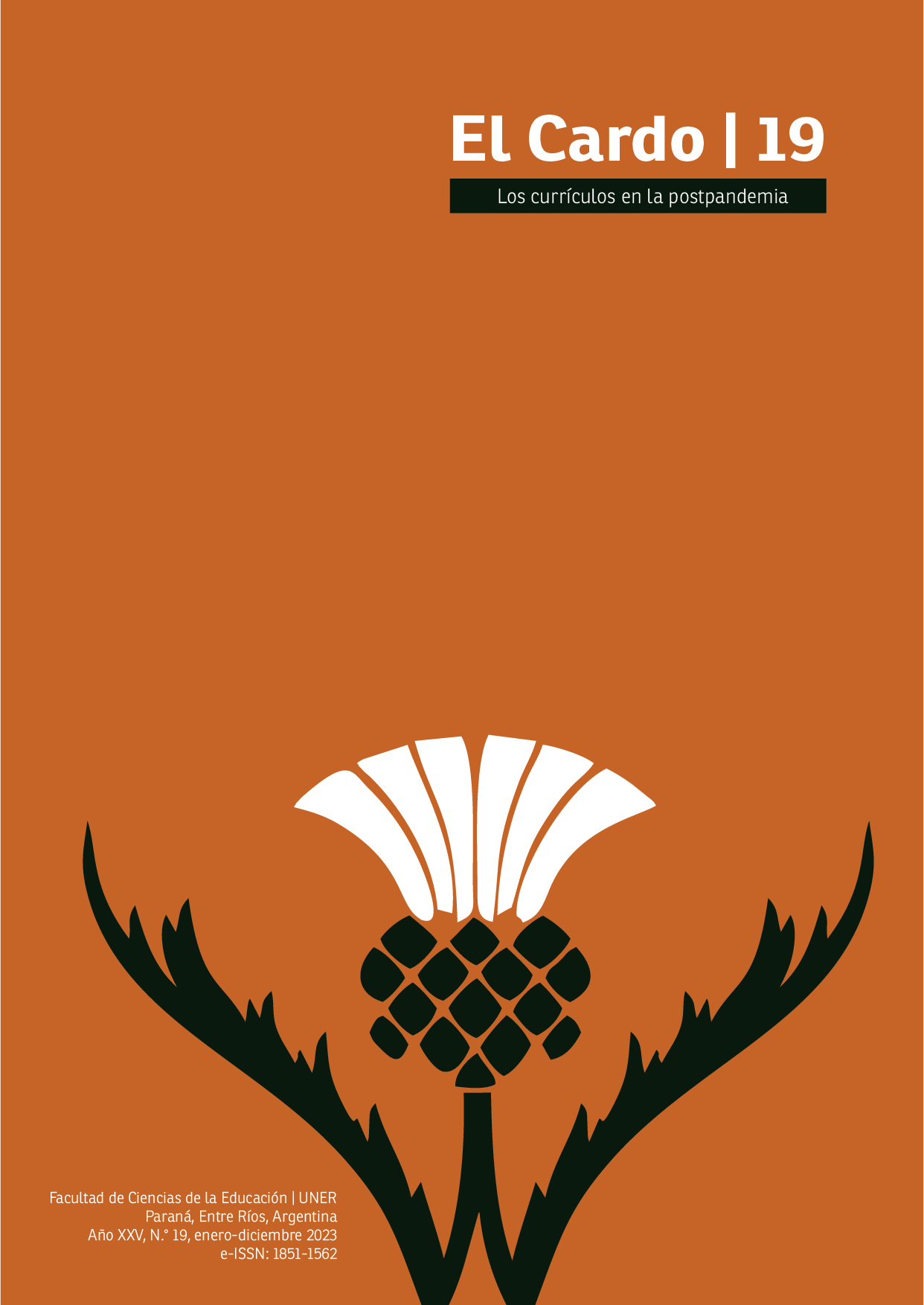From the written text to the post-pandemic present: nothing will ever be the same again
Main Article Content
Abstract
The covid-19 pandemic modified the structures of economic, social, cultural, and educational relations, to mention only some of the structures that organize people's daily lives. The 2020–2022 time frame becomes key when it comes to building and producing texts, knowledge, discourses around the curriculum, didactics, and teaching in this post-pandemic context. It is (almost) irrefutable to conceive this phenomenon as an irruption that occurred in all domains and crept in through every crack that opened up in its path. Nothing will ever be as it was before is an imperative that circulates in this present that we recognize as post-pandemic. Noticing some passages from the written text (curriculum) to the present educational institutional circumstances allows us to perceive some current challenges and evoke some orientations on readings and views in this contingency.
The pandemic, as a dislocating disruptive feature –and the post-pandemic effect–, are proposing a scenario in which State institutions are considered finished. This vacuity of the signifier coming from hegemonic discourses is a concern, since it refers to the end of school as a public institution that articulates what is common and, with it, to the curriculum as a text that represents the common. Taking up the post-pandemic signifier and constantly giving it meanings, recognizing the discursive plots and language games that constitute it in each particular scenario where it has left its trace, will help to make a better reading of the circumstances of the present. Translating the curricular text in post-pandemic school educational settings requires giving political, identity related, local, and international meanings to the curricular discourses that are woven there. Keeping in mind the dislocation of structures and giving buoyancy to the signifier are key elements to create possibilities for the future in contexts of generalized structural crisis.
Downloads
Metrics
Article Details

This work is licensed under a Creative Commons Attribution-NonCommercial-ShareAlike 4.0 International License.
Las ediciones no tienen cargos para las y los autores ni para las y los lectores, y se incita a las y los autores a depositar sus contribuciones en otros repositorios institucionales y temáticos, con la certeza de que la cultura y el conocimiento son un bien de todos y para todos. El Cardo permite la reutilización luego de su edición (Post print) citando la autoría y la fuente original de su publicación. Su uso no puede ser con fines comerciales.
References
Carlachiani, C. (2021). Escuelas secundarias inclusivas. Una lectura curricular poscrítica. Teseo.
Casimiro Lopes, A.; Rodrigues da Cunha, E. y Camilo Costa, H. (2013). De la recontextualización a la traducción: Investigando políticas de currículum. Currículo sem Fronteiras 13(3), 392-410.
Cullen, C. (1997). Crítica de las razones de educar. Paidós.
De Alba, A. (1995). Currículum: Crisis, Mito y Perspectiva. Miño y Dávila Editores.
De Alba, A. (2007). Currículum-sociedad. El peso de la incertidumbre, la fuerza de la imaginación. IISUE Educación- Plaza y Valdés Editores.
De Alba, A. y Casimiro Lopes, A. (2015) (Coord.). Diálogos curriculares entre México y Brasil. IISUE.
Laclau, E. (2005). La razón populista. Fondo de Cultura Económica.
Laclau, E. (2014). Los fundamentos retóricos de la sociedad. Fondo de Cultura Económica.
Laclau, E. y Mouffe, C. (2004). Hegemonía y estrategia socialista. Hacia una radicalización de la democracia. Fondo de Cultura Económica.
Morelli, S. (2016) (coord.). Núcleos Interdisciplinarios de Contenidos nic. La educación en acontecimientos. Homo Sapiens.
Morelli, S. (2017). Discurso e política como linguagem para o currículo: a contribuição de Chantal Mouffe para investigação da Educação Básica na Argentina en Casimiro Lopes, A. y Oliveira, M. (Organizadoras). Políticas de Currículo: pesquisas e articulações discursivas. Editora CRV.





